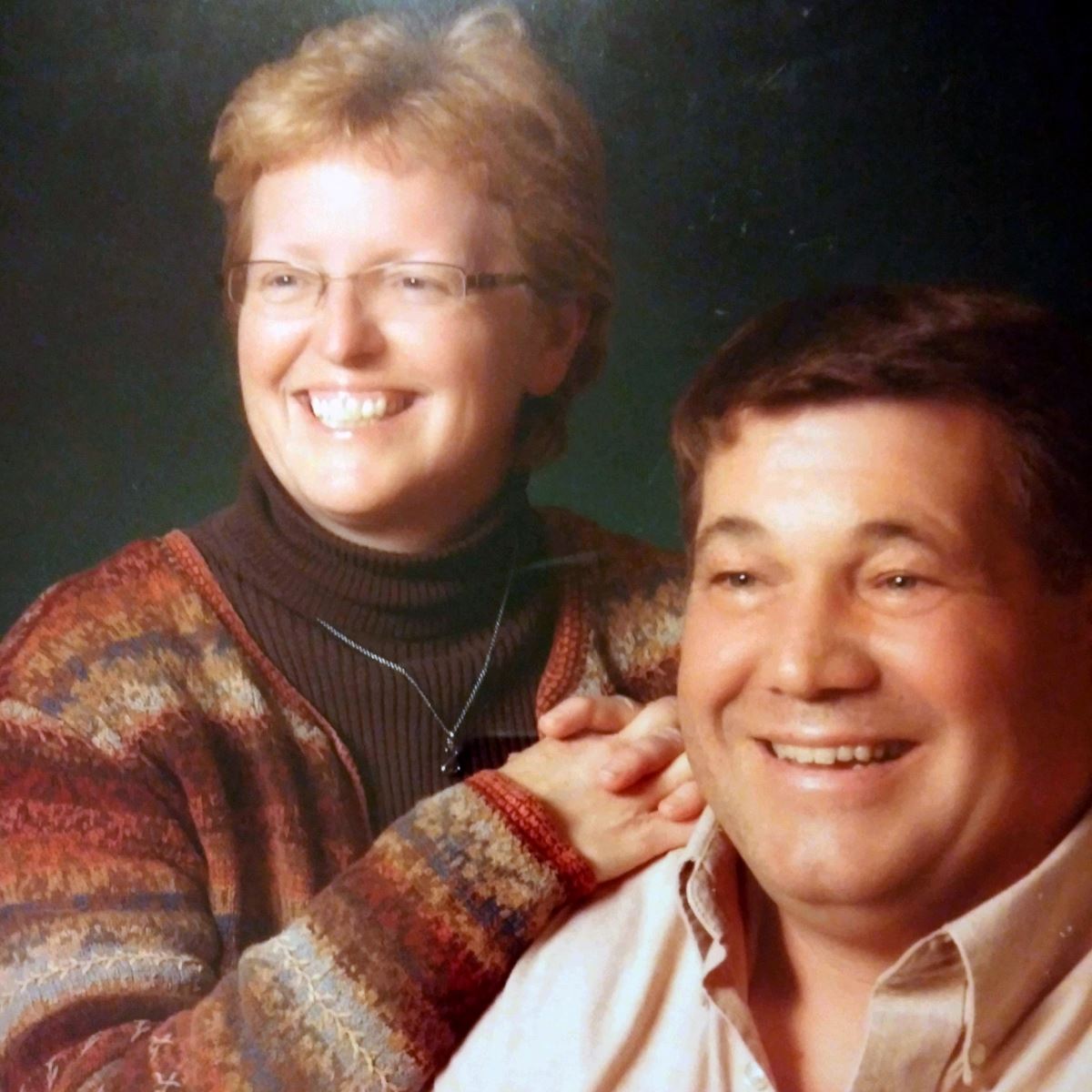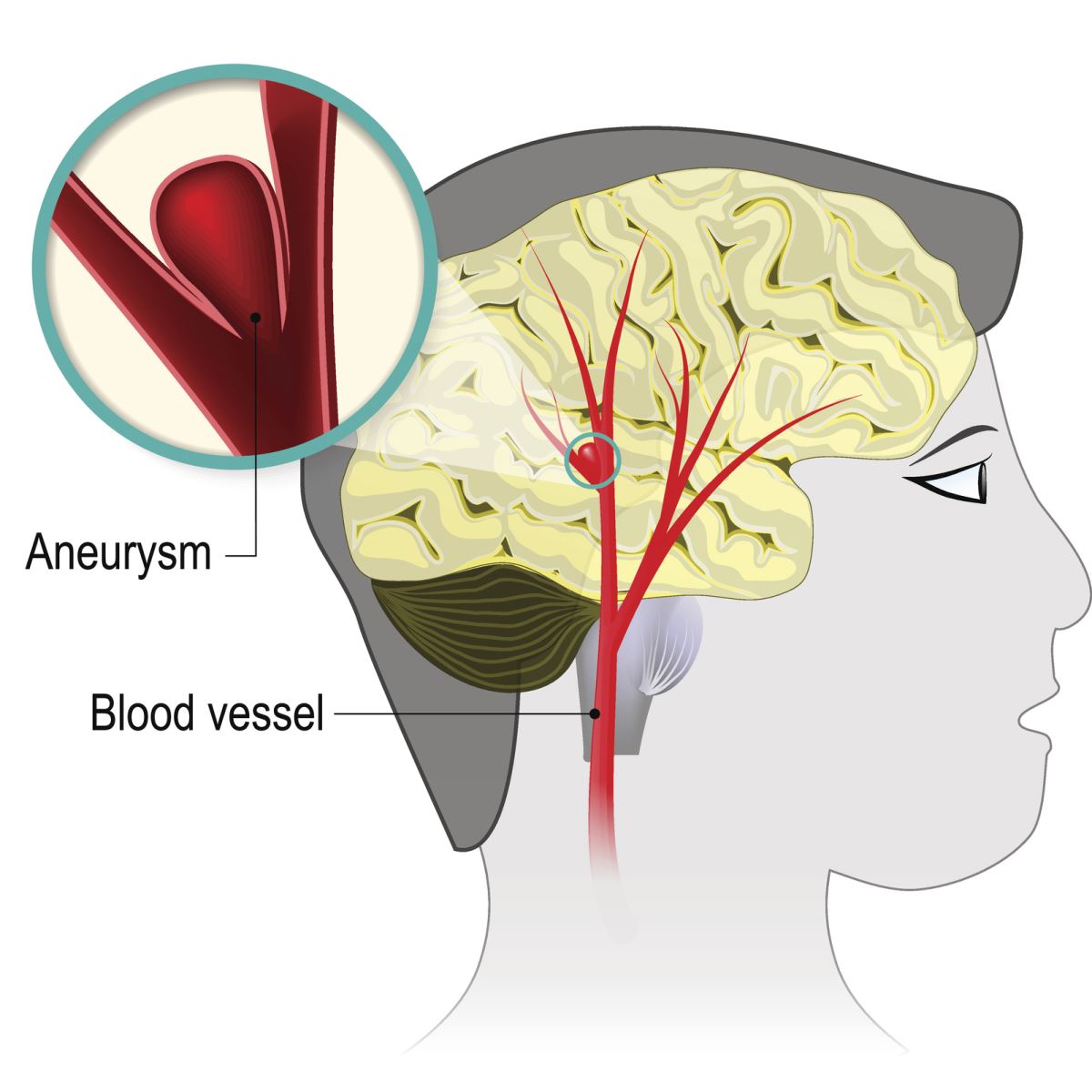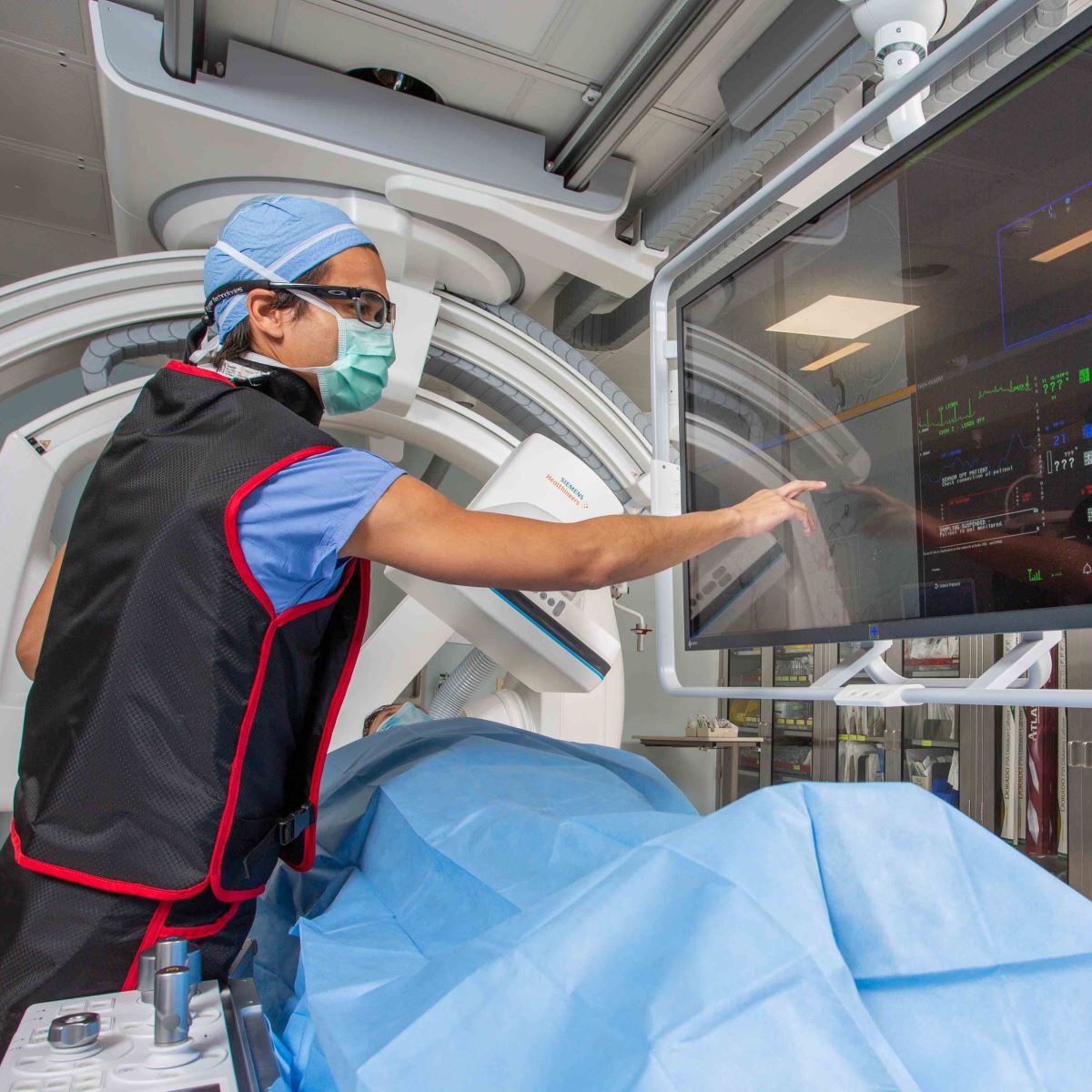Elective Endovascular Aneurysm Repair

Todd Zalud knows aneurysms. The 58-year-old Bear Lake man has a family history that includes losing several close family members to the condition.
When his family doctor discovered an aneurysm on Todd’s carotid artery in 2019, it wasn’t a huge surprise, but it was a concern. Especially the location.
“I know the carotid artery, but usually I think of that as part of the neck, Todd said. “But when I found out the aneurysm was actually in the carotid artery in my brain, not in my neck? Now I’m worried.”
By the summer of 2020, slight changes in the aneurysm’s size and shape had increased the chance of a rupture. Without an interventional procedure, especially given his family history, Todd would very likely suffer a fatal brain bleed.
What is an Aneurysm?

Aneurysms form when the artery or blood vessel wall breaks down. The pressure of blood pumping through the artery can cause a bulge in the weak area. Exact causes can vary, but in cerebral aneurysms, factors typically include:
- Advanced age
- Atherosclerosis (hardening of the arteries)
- Binge drinking
- Family history
- High blood pressure
- Smoking
The larger an aneurysm, the greater its risk for rupture. A rupture can cause life-threatening bleeding and possibly death. And because aneurysms may continue growing as the artery wall weakens, treatment is required as quickly as possible.
What are the Symptoms of an Aneurysm?
As a former heavy smoker, Todd’s lifestyle likely added to his family history as contributing factors to his aneurysm. But if not for his family history, he might not have been aware of his condition.

When Todd’s aneurysm was first discovered, it was around six millimeters wide. After a follow-up computed tomography angiography (CTA) in 2020, the aneurysm had developed irregularities known as daughter sacs. Still without symptoms, Todd was referred to neurosurgeon Gary Rajah, MD, director of Munson Healthcare’s Endovascular Stroke Program.
After performing a diagnostic cerebral angiogram and discovering additional weak spots, Dr. Rajah recommended an endovascular procedure to repair the aneurysm.
Minimally-Invasive Aneurysm Repair
Not all cerebral aneurysms are the same. Dr. Rajah studies the characteristics and dimensions of each aneurysm in detail and chooses the procedure that best benefits the patient while minimizing the risks.

Todd’s procedure began with a small poke near the groin. (Sometimes the wrist is appropriate as well.) Dr. Rajah then fed a micro catheter into Todd’s femoral artery and used real-time 2- and 3-D biplane technology to track the device up through the artery to Todd’s brain into the 1 mm artery with an aneurysm.
Once the catheter reached the aneurysm, a permanent WEB implant made of nickel-titanium mesh was fed through the catheter and released into the aneurysm sac. This implant stabilizes the artery wall, reduces blood flow into the aneurysm, and promotes healing.
Dr. Rajah keeps patients awake during these procedures so they can be monitored. The entire surgical team was able to speak with Todd throughout the procedure to make sure he remained neurologically intact.
“Our comprehensive neurovascular care allows us to tailor aneurysm treatment to a patient’s pathology and needs,” Dr. Rajah said. “Minimally-invasive surgical options continue to help us avoid large cranial incisions and provide excellent outcomes. Our team weighs each aneurysm for both open and endovascular treatment types and we identify which procedure is right for each patient and family.”
Aneurysm Surgery Recovery

“The success of the procedure totally blew me away,” Todd said. “I was only mildly sedated, so I could have watched it live, but I chose to keep my eyes closed and focus on staying still. There were a few uncomfortable moments, but it was pretty much a walk in the park. I took it easy for about five days, then got back to all my normal routines.”
Normal routines for Todd include slinging 40-pound bags of animal feed as part of his job, and hunting. Plenty of hunting. Not to mention spending time with Mary, his high school sweetheart and wife of 38 years.
Thankfully, Todd and Mary’s adult son Jacob hasn’t yet shown signs of an aneurysm that certainly runs in the family. But if an aneurysm is discovered, Todd wouldn’t hesitate to recommend Dr. Rajah.
“I got good vibes from him right away,” Todd said. “I felt very comfortable in Dr. Rajah’s presence and I was very confident he was the guy to do the job. He uses plain language to explain everything so we can easily understand his recommendations. He even took us to a separate room and showed us images on a screen so we could actually see the aneurysm.
“He was open to us getting a second opinion on surgery, but I didn’t need it. His professionalism is spot-on.”
Scheduling an Elective Aneurysm Consultation
If you’re living with an aneurysm, it’s extremely important to stay vigilant and follow the advice of your family doctor.
- Have screenings performed as often as advised
- Follow diet, exercise, and weight control recommendations
- Take medicine as prescribed
If symptoms are present and worsen over time, or new symptoms arise, seek immediate medical attention. Especially if you have sudden or severe pain in the area of the aneurysm. This could be a sign that the aneurysm has ruptured.
Munson Healthcare’s neurosurgery team is dual trained in minimally-invasive procedures and open cranial procedures with access to world-class technology – including the only biplane imaging lab in northern Michigan and one of only seven in the United States. Speak with your family doctor or call 231-392-0640 to discuss a consultation.